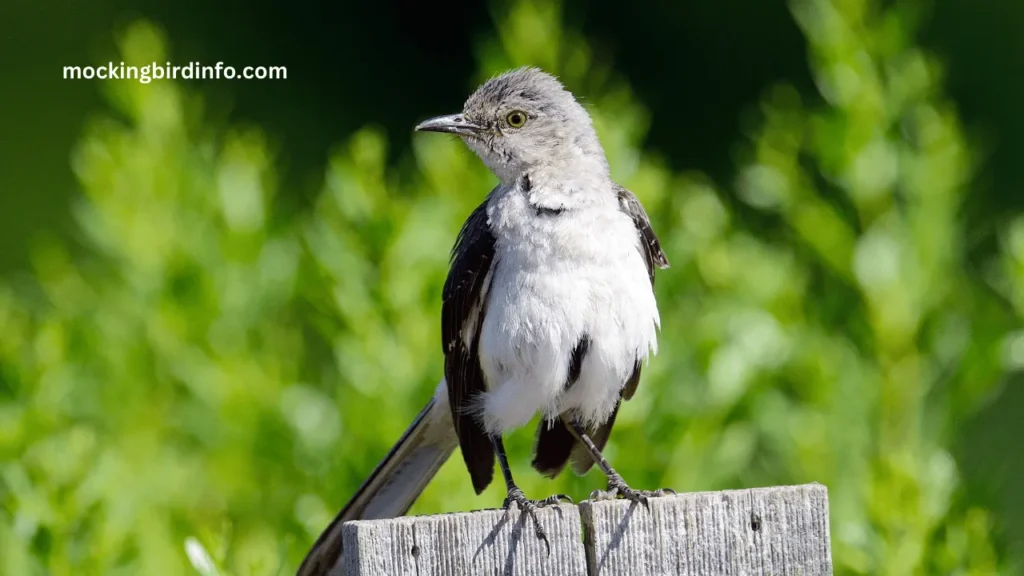When you spot a mockingbird in your yard, do you stop to think about how clever it truly is? These birds are famous for their extraordinary ability to mimic the sounds they hear, whether it’s the chirps of other birds, the buzzing of insects, or even the beeping of car alarms.
But mimicry is just the surface of their intelligence. Mockingbirds are capable of much more, from complex problem-solving to socially strategic behavior, showcasing advanced cognitive abilities that may surprise many.
In a world where we often marvel at the intelligence of mammals, it’s easy to overlook the remarkable mental capacities of birds. Yet, mockingbirds challenge that assumption, revealing an unexpected level of cognitive complexity.
Their problem-solving skills, ability to adapt to new environments, and mastery of learning through imitation are just a few ways these birds demonstrate their intelligence. But what exactly makes them so smart?
This article will dive deep into the intriguing world of the mockingbird’s mind. We’ll explore their mimicry, problem-solving abilities, and social behaviors—all contributing factors to the remarkable intelligence that sets these birds apart.
Whether you’re a bird enthusiast or someone fascinated by animal intelligence, understanding the mockingbird’s mind will leave you amazed at what these feathered creatures can truly do.

Contents
Cognitive Abilities
Mimicry is undoubtedly the most well-known trait of the mockingbird, but this behavior goes beyond simple entertainment. Mockingbirds possess a highly developed vocal learning system, which allows them to imitate a wide range of sounds, from the calls of other birds to human-made noises like car alarms or sirens.
This ability serves many purposes, including territorial defense, where the bird mimics other species to make its territory seem more populous and therefore harder to invade.
Mimicry is a survival strategy that ensures the mockingbird’s dominance in its environment by creating the illusion of a larger and more diverse community of creatures.
When it comes to problem-solving, mockingbirds are known to exhibit creativity. These birds have been observed figuring out how to open containers to access food, using tool-like behavior to solve challenges that require more than just instinctual responses.
Their ability to adjust their behavior to access food or find new resources is a clear indication that mockingbirds are not only intelligent but also capable of innovative thinking.
They use their experiences to adjust and refine their strategies, an example of cognitive flexibility that is seen in more intelligent animals.
Spatial memory is another remarkable trait of mockingbirds. These birds rely heavily on their ability to remember where they have hidden food, often returning to specific spots where they have cached it.
This is particularly important for mockingbirds, which tend to store food in various locations to ensure a steady supply. Their spatial awareness helps them efficiently navigate their territory and locate food sources even after some time has passed, which highlights the depth of their memory and spatial learning capabilities.
In addition to their memory and problem-solving skills, mockingbirds display a remarkable ability to learn from their environment.
They can learn not just through trial and error, but also through observational learning. When a mockingbird watches another bird forage or interact with a new object, it can replicate that behavior.
This form of social learning suggests that mockingbirds are not only smart individuals but are also part of a larger learning community, where they observe and imitate behaviors that lead to success.
Social Intelligence
Mockingbirds are not solitary creatures; they have intricate social behaviors that require strategic thinking. Their territorial behavior is a prime example of their social intelligence.
These birds fiercely defend their territories from intruders, often using aggressive displays, including their mimicry abilities, to ward off competitors.
The decision-making process involved in these interactions requires the mockingbird to evaluate the size and strength of potential threats, determine the most effective defense strategy, and then execute that plan with precision.
This ability to assess and respond to social dynamics reflects a high level of cognitive complexity.
In some mockingbird species, cooperative breeding is observed, a behavior where multiple individuals contribute to raising the offspring of others. This cooperative approach highlights the social intelligence of mockingbirds.
It requires understanding the importance of collaboration for the survival of the species and recognizing that pooling resources can lead to better reproductive success.
These behaviors are indicative of social cohesion and decision-making that benefits the larger group, which is a sign of intelligence that goes beyond the individual level.
Social learning is also crucial to the mockingbird’s intelligence. Beyond learning from their own experiences, mockingbirds have the ability to learn from the actions of others.
This is especially evident when mockingbirds observe other birds foraging, responding to danger, or adapting to new environments. Imitation is a form of cultural transmission, where one bird’s learned behavior is passed to another.
This social learning allows mockingbirds to adapt and evolve in response to changing conditions, which plays a key role in their survival.

Factors Contributing to Intelligence
Mockingbird intelligence isn’t just the result of their behavioral traits—it’s also influenced by the structure of their brain. Like many other intelligent birds, mockingbirds have specialized brain regions for vocal learning and memory, which are crucial to their ability to mimic sounds and remember locations.
The neuroanatomical features of their brains, particularly in areas involved in learning and memory, enable them to carry out complex tasks that require cognitive processing.
The size and organization of these brain regions are indicative of their ability to perform tasks that require advanced thought.
Environmental factors also play a significant role in shaping the mockingbird’s intelligence. For example, mockingbirds that live in urban environments are more likely to mimic human-made sounds because of the diversity of noise around them.
This adaptability shows their intelligence in adapting to new challenges and environments. Mockingbirds in rural areas may rely more heavily on mimicking other bird species, but urban birds have learned to adapt their skills to their surroundings.
The availability of resources, such as food and suitable nesting sites, can also influence how mockingbirds develop their cognitive abilities.
Genetics also contribute to the mockingbird’s intellectual capacity. Studies suggest that genetic factors may determine how well mockingbirds can learn and adapt to their environment.
This could include how they develop vocal abilities or how efficiently they use their spatial memory. These genetic predispositions ensure that mockingbirds are equipped with the necessary tools for survival and cognitive flexibility.
Scientific Research
Research into the cognitive abilities of mockingbirds has been conducted through both experimental studies and field observations. Controlled experiments have shown that mockingbirds are capable of solving complex puzzles and tasks that require them to think critically.
These experiments often focus on aspects like memory, problem-solving, and learning, revealing that mockingbirds have impressive cognitive flexibility and the ability to perform tasks that require them to understand cause and effect.
Field studies, meanwhile, provide invaluable insights into how mockingbirds use their intelligence in real-life situations. Observations of mockingbird behavior have shown that these birds can recognize specific individuals, including humans, and remember past interactions with them.
This individual recognition is essential for both territorial defense and avoiding predators. Mockingbirds also demonstrate adaptability in their interactions with other species, learning new strategies as their environment changes.
Conclusion
In conclusion, the intelligence of mockingbirds is multifaceted, ranging from their remarkable mimicry and problem-solving skills to their complex social behaviors.
Their ability to adapt, learn, and innovate shows that these birds possess a level of cognitive flexibility that is often underestimated.
Mockingbirds are not just simple songbirds; they are highly intelligent creatures capable of complex behaviors that rival those of more traditionally intelligent species.
Understanding the intelligence of mockingbirds is crucial for conservation efforts, as it highlights the importance of preserving their habitats and the ecosystems that support their cognitive development.
These birds provide a fascinating glimpse into the diverse ways that animals solve problems, communicate, and adapt to their world.
FAQs
1. Can mockingbirds really mimic human voices?
Yes, mockingbirds can replicate human-made sounds, although they typically mimic bird calls and other natural noises more often.
2. Do mockingbirds use tools?
While not as frequently as some other birds, mockingbirds have shown problem-solving behavior that suggests they may innovate in certain situations, potentially using tools.
3. How do mockingbirds learn new sounds?
Mockingbirds are capable of vocal learning, where they observe and imitate sounds they hear in their environment, refining their mimicry over time.
4. Why do mockingbirds mimic other birds?
Mimicry is often a territorial defense mechanism, as it helps create the impression of a larger community and deters intruders.
While typically territorial, mockingbirds exhibit social learning and cooperative breeding behaviors, which demonstrate a level of social interaction.
6. What helps mockingbirds remember where food is?
Their spatial memory allows them to recall food locations even after some time, an essential survival trait.








